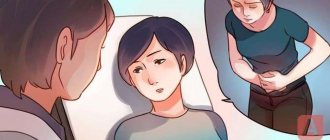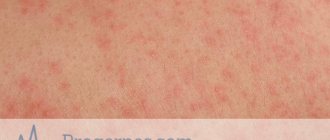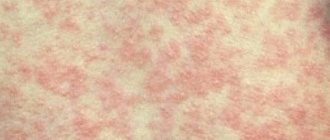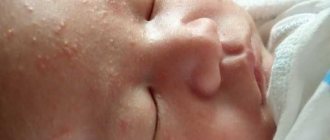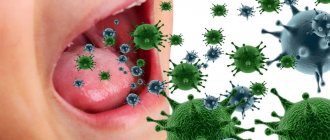What is celiac disease?
Celiac disease or celiac enteropathy is a chronic autoimmune disease of the body characterized by gluten intolerance. Most often occurs in carriers of the HLA-DQ2 genes (95% of patients have this gene), HLA-DQ8 (5%). First of all, the disease affects the mucous membrane of the small intestine, causing chronic inflammation, atrophy, and malabsorption. Disorders in the functioning of the whole organism are a consequence of this pathology.
In Russia, no statistical studies have been conducted on the number of patients with celiac disease, but in St. Petersburg alone, about 2000 children suffer from this disease. There is an assumption that the total number of patients in the country is more than 3 million people.
Gluten is added to sauces, ketchups, mayonnaise, sausages, even canned meat. Manufacturers began to indicate on packaging the following statements: “possible traces of gluten”, “contains gluten”.
Recently, more and more children are susceptible to celiac disease. Today, 1% of the world's population suffers from gluten indigestion. Celiac disease, like lactose intolerance, is inherited.
Celiac enteropathy should not be confused with gluten allergy. The smallest particles of gluten can cause serious consequences in an allergy sufferer, including anaphylactic shock, but the intestinal villi are fine.
Symptoms of celiac disease in children
In children with celiac disease, the digestive system is primarily disrupted, which is expressed in the form of severe pain in the abdominal area.
They do not appear immediately after the child has eaten foods containing gluten, but after some time.
5 hours after eating, the pain becomes more intense.
An increase in abdominal pain may occur during bowel movements (defecation).
This pain syndrome usually cannot be relieved by taking all kinds of painkillers.
In addition to pain with celiac disease, children experience constant nausea, which is often accompanied by frequent vomiting.
As a result, appetite disturbance occurs, that is, it can worsen or increase.
Due to a lack of calcium in the body, the human skeletal system is affected, which sometimes provokes an increase in bone fragility and the development of various joint diseases.
Therefore, some patients suffering from celiac disease are registered with doctors such as an orthopedist, hematologist, traumatologist and rheumatologist.
Rarely, due to a lack of calcium, a patient may experience pain in the joints, but the formation of arthritis (a pathology characterized by deformation of the joint tissue) will not occur.
Quite often, the clinical manifestations of celiac disease are expressed in the form of the development of such pathologies in the patient as scoliosis (curvature of the spinal column), caries (destruction of hard dental tissues), osteoporosis (increased fragility of bone tissue).
In this case, the child is depressed and quickly loses body weight.
The main danger of celiac disease is that it can cause damage to the patient’s nervous system.
As a result of this, he becomes irritable and aggressive.
Such symptoms only increase the intensity of pain in the abdomen.
Also, due to constant malaise, the child sleeps poorly, loses muscle tone and may even fall into a depressive state.
As celiac disease progresses, pathological changes occur in the mucous membrane of the small intestine.
In this regard, the protein entering the gastrointestinal tract along with food cannot be fully broken down and absorbed, which thereby contributes to the appearance of a strong allergic reaction in the body.
The clinical signs of celiac disease are similar in their manifestations to the symptoms of a common food allergy to any food product.
Because of this, it is quite difficult to diagnose celiac disease during the initial examination of the patient.
Other signs of celiac disease in children
- apathy (indifference to what is happening) and rapid fatigue;
- periodic nosebleeds;
- increased incidence of child morbidity with various respiratory viral pathologies;
- the presence of frequently occurring stomatitis (formation of ulcerative tumors in the oral cavity);
- skin itching;
- possible hair loss from the head;
- increased brittleness of nails;
- in rare cases, it is possible to develop vitiligo (a skin disease characterized by disruption of normal pigmentation processes in some areas of the human skin);
- decreased visual acuity.
How can we stop eating gluten?
A strict gluten-free diet is the only treatment for celiac disease. Eating even small amounts of gluten can cause intestinal damage, causing a relapse of disease symptoms. A gluten-free diet requires a lot of discipline and care from both parents and children.
Meeting with a nutritionist experienced in treating celiac disease can help parents and children:
- It is better to understand which products are safe for your child and which are dangerous.
- What to look for on food and drug labels to determine whether they contain gluten or not.
- How to plan a well-balanced gluten-free diet.
- Determine if vitamin and mineral supplements are needed.
- Make the necessary adjustments to ensure a safe gluten-free diet in your home and school.
- Find gluten-free substitutes for foods your child loves.
Some people feel relieved when they learn they have celiac disease. Others, upon learning that they need to follow a gluten-free diet for the rest of their lives, feel overwhelmed. Either way, it's important to remember that a gluten-free diet is key to recovery. Luckily, life on a gluten-free diet has become easier due to the increased availability of gluten-free foods.
The role of the dietitian in treatment
- The doctor will explain which foods are harmless and which ones need to be avoided.
- Tells you how to read food package labels to know if a food or medication is safe.
- Explains how to plan a well-balanced gluten-free diet.
- Determines whether mineral and vitamin supplements are needed.
- Makes necessary adjustments to ensure a safe gluten-free diet at school and at home.
- Will tell you where to find gluten-free substitutes for your child’s favorite foods.
Parents need to understand that a gluten-free diet is the main key to recovery.
Living on a gluten-free diet has become easier due to the increased availability of gluten-free foods.
Treating celiac disease is a lifelong endeavor
There is no treatment for celiac disease as such. The only way to avoid such terrible manifestations of this disease is to once and for all eliminate foods containing gluten from the child’s diet. As a rule, doctors who have a child with celiac disease give parents detailed recommendations regarding the preparation of a gluten-free diet.
But in reality, creating a completely gluten-free diet is a huge challenge! On the one hand, the modern food industry has learned to completely eliminate gluten from products that naturally contain it in huge quantities. Nowadays, in almost any large supermarket you can find bread, pasta and other products labeled gluten-free. But on the other hand, gluten is often found in foods that shouldn’t contain it!
For example, gluten is almost always present in cocoa, sausage, candies and chocolate, yogurt, some cheeses, processed meats, etc. The fact is that gluten, being gluten, is very widely used in the production of all kinds of thickeners, stabilizers, leavening agents, food colorings - components with which the lion's share of modern food products is generously flavored. This is the so-called “hidden” gluten, which most manufacturers do not notify their consumers about.
Thus, parents always run the risk of accidentally feeding their baby a gluten-containing “lunch.” Nevertheless, only a systematic gluten-free diet will allow the child to grow and develop normally, no different from his peers.
Over time, parents will have to teach their child with celiac disease in detail the rules of survival in the world of modern food products.
But no matter how careful and meticulous you are in matters of gluten-free nutrition for your child, this will not change the overall picture: a child with celiac disease will gradually turn into an adult with celiac disease. And he will live with her “hand in hand” all his life...
Treatment methods in children and gluten-free diet
What to do if your child has celiac disease? First of all, familiarize yourself with what a gluten-free diet is and follow the appropriate recommendations, namely, exclude from the patient’s diet:
- Bulgur (durum wheat grain);
- Barley and wheat;
- Starch in any form;
- Cereal products;
- Coarse flour;
- Triticale;
- Semolina and spelled;
- Malt and rye.
A gluten-free diet is the basis for the treatment of celiac disease in children. If parents cannot plan a diet on their own, a gastroenterologist and nutritionist can help with this.
Visible improvements in the condition occur several weeks after eliminating gluten-containing foods from the usual diet. Complete restoration of the microflora is diagnosed, depending on the degree of damage (the recovery period can last from 3-4 months to several years). Children usually recover faster than adults.
If there is a clear deficiency of nutrients, it is recommended to take pharmacy vitamins and mineral components with the addition of calcium, iron, vitamins B12, D, K, zinc and folate. In case of poor absorption in the intestine, injections are prescribed.
Steroids are prescribed to children with severe inflammatory processes in the intestines. These drugs promote healing. At the same time, treatment of skin rashes may be prescribed.
For children and adults with celiac disease, processed foods, sweets, sauces and additives, low-quality meat and seafood are contraindicated. In the list of permitted products:
- Vegetables and fruits;
- High quality dairy products;
- Meat of cattle, poultry, fish.
Treatment
Treatment of celiac disease in children necessarily involves a lifelong avoidance of grains containing gluten, such as wheat, barley and rye. Completely exclude semolina, pasta and bakery products based on flour from the above cereals. In addition, it is worth limiting the consumption of sausages, smoked meats, ice cream, chocolate, various sauces, ketchups and mayonnaise, coffee and cocoa, and canned food. This is due to the fact that they may also contain this protein. It is allowed to take products made from rice and corn flour, as well as potatoes, fish, meat and fruits. If you follow proper nutrition, the first improvements are visible within a month - complete restoration of the intestinal mucosa occurs throughout the year.

In addition, treatment of this syndrome is aimed at eliminating symptoms not related to the gastrointestinal tract. Often patients are prescribed:
- drugs to increase hemoglobin levels;
- medications containing calcium and vitamin D - necessary to strengthen bone tissue. Normalization of bone density is achieved in about a year. Otherwise, increased bone fragility can lead to disability;
- vitamin complexes.
If necessary, courses of therapy are prescribed by a psychotherapist. With timely and correct treatment, the prognosis of the disease is favorable.
What symptoms to look out for
Regular bowel dysfunction (diarrhea) is a classic symptom of celiac disease. However, signs of the disease are often not expressed. Diarrhea worries only a third of patients with this diagnosis. Constipation is diagnosed in 20 percent of cases, obesity in 10 percent.
Departing from the topic of symptoms of celiac disease from the digestive tract, it is worth highlighting such extraintestinal signs as:
- Iron deficiency, or anemia;
- Blistering itchy rash on the skin;
- Osteoporosis;
- Osteomalacia;
- Caries and other signs of damage to tooth enamel;
- Increased fatigue;
- Headache;
- Numbness, tingling sensation in the limbs and other manifestations of dysfunction of the nervous system;
- Heartburn;
- Belching;
- Hyposplenism (splenic insufficiency);
- Joint pain.
Diarrhea, bloating, colic, and developmental delay are signs of celiac disease in infants. Adolescents with this disease often suffer from bowel movements, short stature, neurological symptoms and delayed reproductive development.
Appendix c. patient information
Celiac disease is a genetically determined disease. People with celiac disease are characterized by intolerance to gluten, a protein found in a number of cereals (wheat, rye, etc.). Under the influence of gluten in patients, the intestinal mucosa is affected and various symptoms of digestive system dysfunction appear - frequent loose stools, bloating, as well as signs of malabsorption of nutrients - weight loss, growth retardation, vitamin deficiencies, lack of microelements.
Celiac disease occurs in both males and females.
The prognosis of celiac disease depends on the timeliness of diagnosis and initiation of therapy.
A strict, lifelong gluten-free diet is the only effective treatment for celiac disease.
Prescribing a gluten-free diet as early as possible determines a favorable prognosis and improves the quality of life of children with celiac disease, preventing the development of complications.
How can celiac disease be cured?
The most effective way to treat this disease is diet. It is worth remembering that only those products that do not contain gluten should be changed. This diet is called gluten-free or agliadine.
Once foods that trigger symptoms are eliminated from the diet, the mucous membrane of the small intestine will begin to recover. All symptoms that appeared due to the consumption of gluten products will disappear almost completely. But it is worth remembering that they will pass depending on how severe the disease is.
Unfortunately, there are currently no effective medications to treat celiac disease.
Is it possible that a child will outgrow this diagnosis?
It is worth remembering that celiac disease is a chronic disease with a hereditary predisposition. Accordingly, it is impossible to completely recover from this disease. In order to achieve almost complete disappearance of all symptoms, it is enough to adhere to a gluten-free diet. But if gluten enters the body at any age, the disease will develop again.
Can a child not inherit celiac disease if both parents have gluten intolerance?
It must be remembered that he is gluten intolerant and celiac disease are two different things. Celiac disease is a disease that has its own diagnostic criteria associated with hereditary predisposition. Gluten intolerance is a completely different condition. It is not based on immune genetic mechanisms and there is no malabsorption of nutrients.
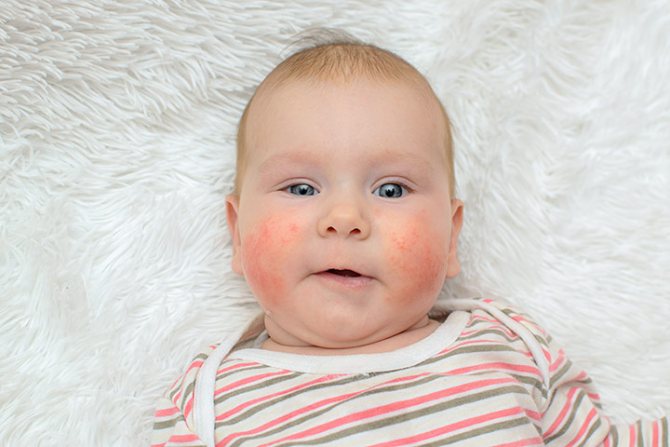
According to statistics, a hereditary predisposition to celiac disease exists in 30% of the population. But there are much fewer people who develop this disease. Scientists have not yet figured out what this is connected with. To date, how celiac disease occurs is still being clarified.
But there is a huge percentage that this disease is transmitted from a close relative to a child. Of course, families in which cases of celiac disease have been identified should be observed by specialists, even if no characteristic symptoms are observed.
Research results:
- It has been noted that the atypical form of celiac disease is more common in older children. Less common in children starting from 5 years of age.
- It has been observed that girls suffer from celiac disease more often than boys.
- A close relationship between atypical celiac disease and damage to the hypothalamic-pituitary system, which is responsible for the proper joint functioning of the nervous and endocrine systems, has been proven. Disturbances in the functioning of the pituitary gland and hypothalamus lead to damage to the adrenal glands, lack of body weight, and diseases of the thyroid gland.
- There has been a proven connection between celiac disease and diseases such as type 1 diabetes and autoimmune thyroiditis. If a child is diagnosed with one of the above diseases, the likelihood of having the other two is extremely high.
- There is a proven connection between celiac disease and various diseases of the upper gastrointestinal tract. Many children whose examination consisted of identifying exclusively diseases of the gastrointestinal tract were later diagnosed with an atypical form of celiac disease.
- The research results also revealed three groups of symptoms of atypical celiac disease in children.
Recommendations for celiac disease
A child with celiac disease should have a separate table and utensils. When preparing food for him, you must follow the following recommendations:
- If in a house where there is a child with celiac disease, other family members do not follow a gluten-free diet, then you need to separate the kitchen equipment.
- Food for a child should not be mixed with the same spoon as dishes for a regular table.
- You cannot cook food with and without gluten in the same pan. It is advisable to have separate utensils for preparing gluten-free food. When this is not possible, it is recommended to thoroughly wash all pots.
- It is advisable to prepare gluten-free food for your child before preparing meals for the rest of the household. If food is being prepared at the same time, you should wash your hands thoroughly after touching foods containing gluten.
- Sharing cutting boards and knives for slicing regular and gluten-free bread is prohibited.
- If gluten gets into your child's food during cooking, it will have to be cooked again.

